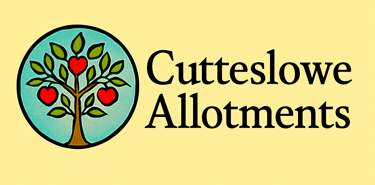Starting out and how-to guides
(See below for the agreed rules on maintaining and using your plot)
Growing your own vegetables is very fulfilling. To cultivate and maintain your plot you will probably need to spend about two hours each week on your allotment. You may need more time if you have a full plot and certain times of year are busier than others. Regular, short periods of work is the key to keeping your allotment well managed and under control.
Experience has shown us that the most successful plot holders tend to work their plots regularly each week. When plots are untended for any length of time the weeds get out of control very quickly. It is then much more daunting and takes much longer to bring the plot back into good condition.
If you are starting out on a plot that needs clearance, then one of the best ways to get things going is to invite friends and family to give you a hand to prepare the plot – many hands really do make light work!
If you are new to growing your own vegetables, please don’t be afraid to ask other plot holders for advice or guidance. We were all beginners once and there is a wealth of knowledge in our association members that you can tap into.
An extract from the Site Maintenance Code of Practice Jan 2025 - See Member Documents page for full text download:
CULTIVATION PROTOCOL & PLOT HUSBANDRY
1. Members must ensure that their plot is kept in a reasonable state of cultivation. ‘Reasonable state of cultivation’ is defined as 80% of the plot prepared for or growing produce during the main growing season (March to October). This requirement does not apply during the winter period. The other 20% can be for sheds, compost bins, seating areas, water butts etc.
2. Produce is defined as being vegetables or fruits for consumption by the Member. Growing of flowers is permitted but should occupy no more than 10% of the plot. A list of advised produce will be available on the website. Brambles/blackberries must be grown within the boundary of the plot and to a height no greater than 2m.
3. Notwithstanding the above, CAAL expects Members to be proportionate in the balance of produce they grow with a range of vegetables, and also fruit and flowers if desired.
4. Only dwarf fruit trees (root stock MM106) may be planted once the written consent of the Committee has been obtained. Fruit trees must be kept to a max. height of 4m and must fall within the plot boundary.
5. Members must aim to keep their plots weed and pest free by (i) restricting dispersal of wind borne seeds, (ii) controlling weeds that spread through the extension of roots or by generating new plants growing from tips in contact with the soil, and (iii) removing long grass or detritus that is likely to harbour pests. Members should keep all weeds within the plot boundary, and on the plot’s boundary fences, cut down to ground level.
6. Members must not discard weeds against any boundary fence or on any other part of the site unless in a compost heap.
7. Members will keep pathways adjoining their plots tidy and free of obstacles.
8. Members will keep all sheds, greenhouses, fruit cages, fences and gates on their plots in safe repair.
9. Fences should be of post and wire construction to a max. height of 1.5m.
10. Members must get the written approval of the Committee for installation of any sheds or greenhouses, first confirming the size, materials and siting of such structures. Installation should be built on shed lines where applicable and must not impair or shade adjacent plots.
11. Members must follow Oxford City Council’s Code of Practice on Bonfires (see site noticeboard and CAAL website).
12. Members must not deposit any rubbish or building materials on their plot or the site.
13. Members must not use any Total or Residual Weed killers or wildlife poisons on their plot or the site. The use of vermin poisons may be used with restrictions and the approval of the Committee.
14. Water Usage:
a) The site has mains water supply via dip tanks. Members are requested to use water from the dip tanks in a reasonable manner.
b) The use of hosepipes, pumps, or any modification to convey water to a plot from the dip tanks, is not permitted.
c) Water in the dip tanks must not be contaminated with any chemical, fertilizer or soil. They are not for washing hands or garden tools.
d) The water supply to the dip tanks will be turned off from November to April each year.
e) The Committee reserves the right to apply a water levy to all Members should the cost of providing mains water prove too expensive.
